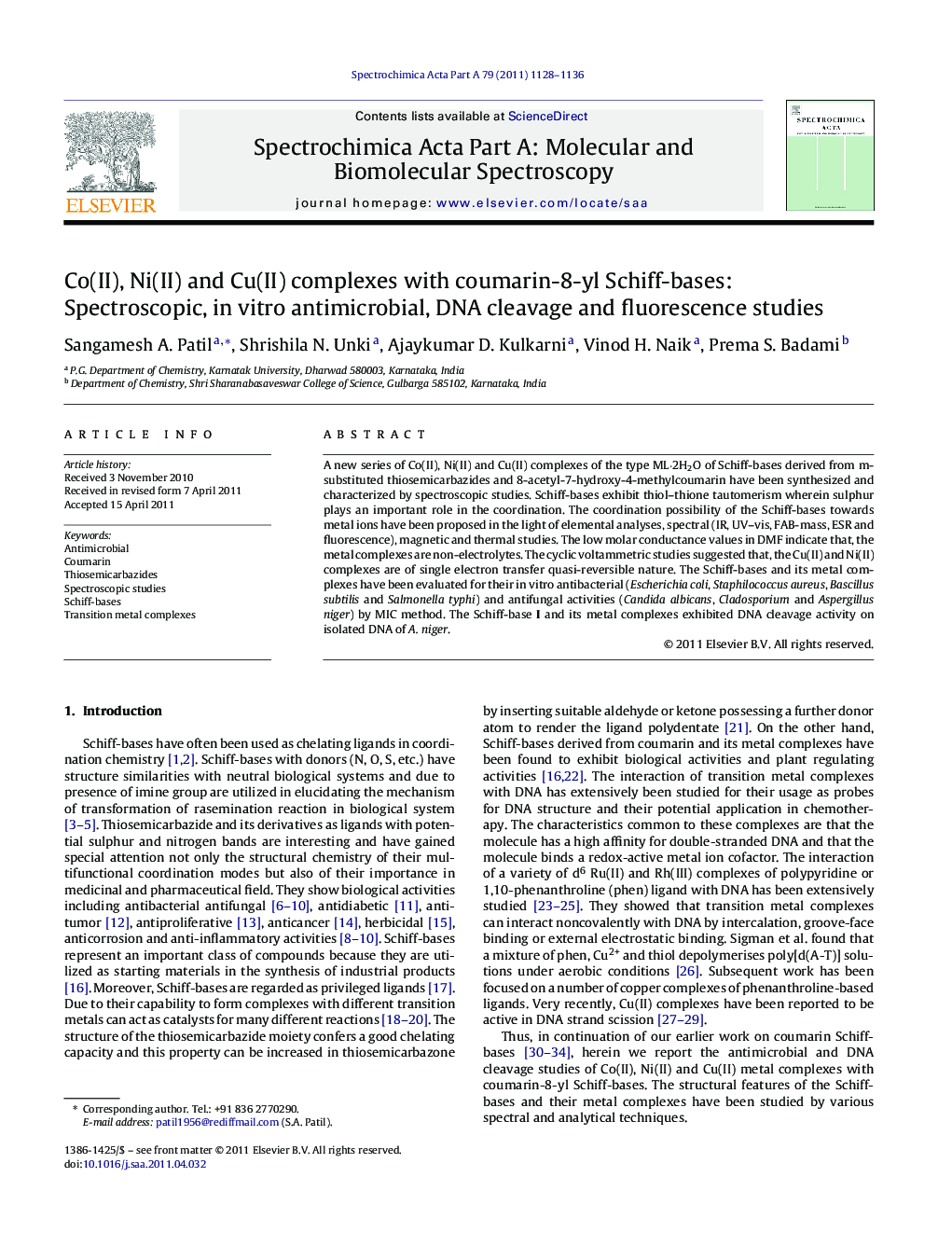| Article ID | Journal | Published Year | Pages | File Type |
|---|---|---|---|---|
| 1236497 | Spectrochimica Acta Part A: Molecular and Biomolecular Spectroscopy | 2011 | 9 Pages |
A new series of Co(II), Ni(II) and Cu(II) complexes of the type ML·2H2O of Schiff-bases derived from m-substituted thiosemicarbazides and 8-acetyl-7-hydroxy-4-methylcoumarin have been synthesized and characterized by spectroscopic studies. Schiff-bases exhibit thiol–thione tautomerism wherein sulphur plays an important role in the coordination. The coordination possibility of the Schiff-bases towards metal ions have been proposed in the light of elemental analyses, spectral (IR, UV–vis, FAB-mass, ESR and fluorescence), magnetic and thermal studies. The low molar conductance values in DMF indicate that, the metal complexes are non-electrolytes. The cyclic voltammetric studies suggested that, the Cu(II) and Ni(II) complexes are of single electron transfer quasi-reversible nature. The Schiff-bases and its metal complexes have been evaluated for their in vitro antibacterial (Escherichia coli, Staphilococcus aureus, Bascillus subtilis and Salmonella typhi) and antifungal activities (Candida albicans, Cladosporium and Aspergillus niger) by MIC method. The Schiff-base I and its metal complexes exhibited DNA cleavage activity on isolated DNA of A. niger.
Graphical abstractFigure optionsDownload full-size imageDownload as PowerPoint slideHighlights► A new series of Co(II), Ni(II) and Cu(II) complexes of the type ML.2H2O of Schiff-bases derived from m-substituted thiosemicarbazides and 8-acetyl-7-hydroxy-4-methylcoumarin have been synthesized and characterized by spectroscopic studies. ► Schiff-bases exhibit thio–thione tautomerism wherein sulfur plays an important role in the coordination. ► The complexes are soluble in DMF and DMSO, fusible at higher temperatures and are polymeric in nature. ► The Schiff-bases and their metal complexes were found to be highly active against some of the antibacterial and antifungal species. ► The DNA cleavage studies revealed that, the complexes shown non-specific cleavage of DNA isolated of A. niger.
